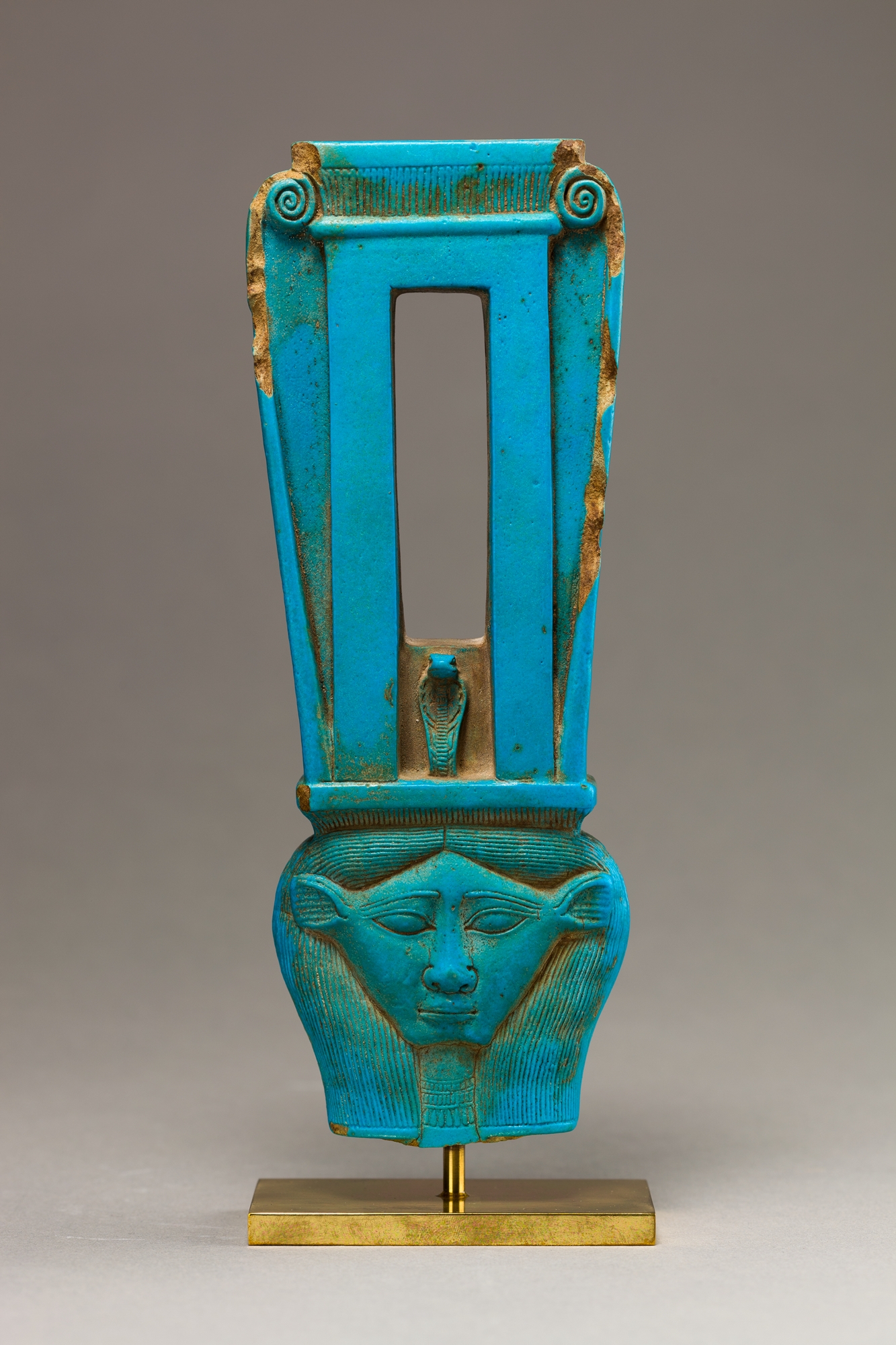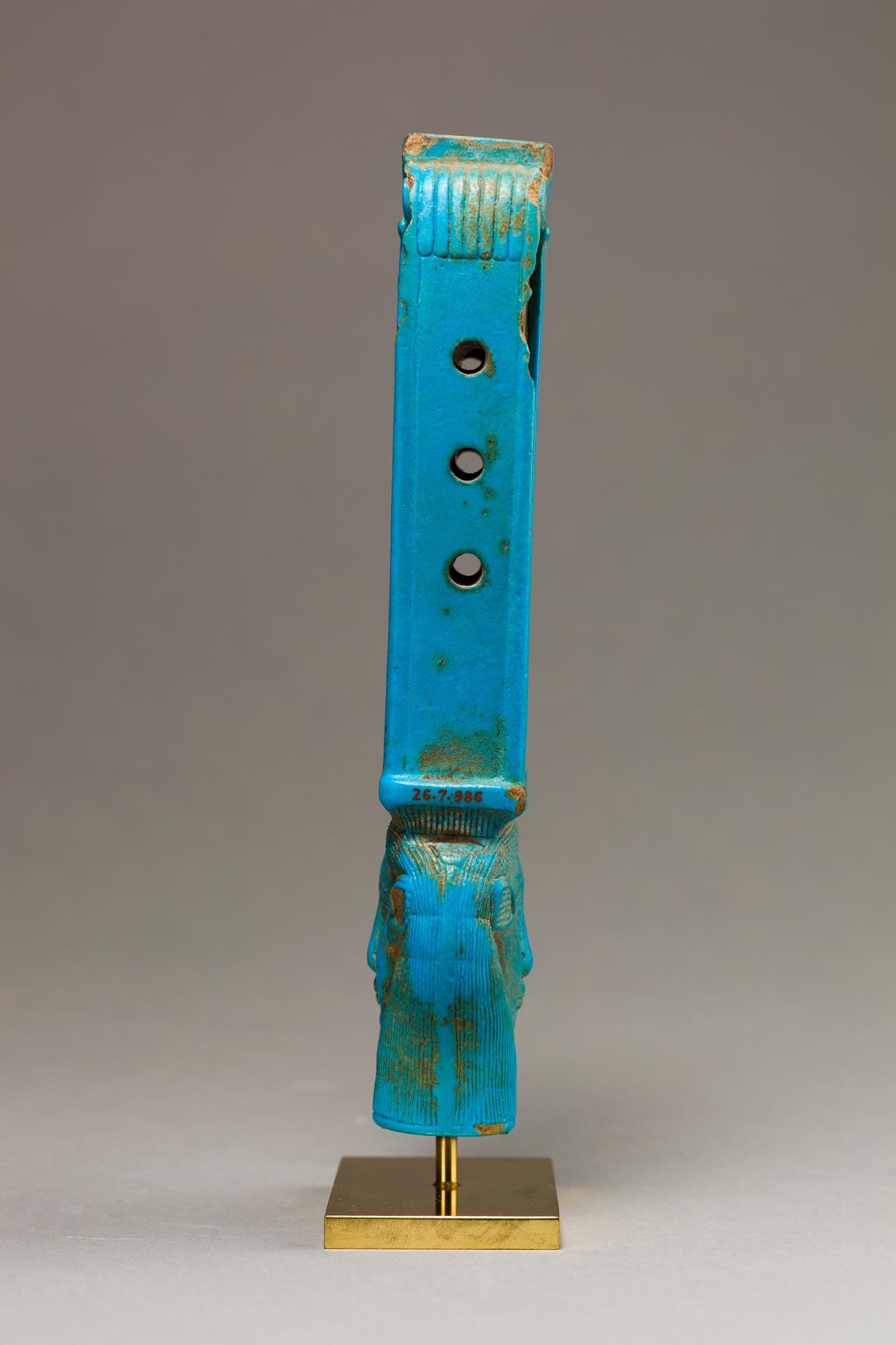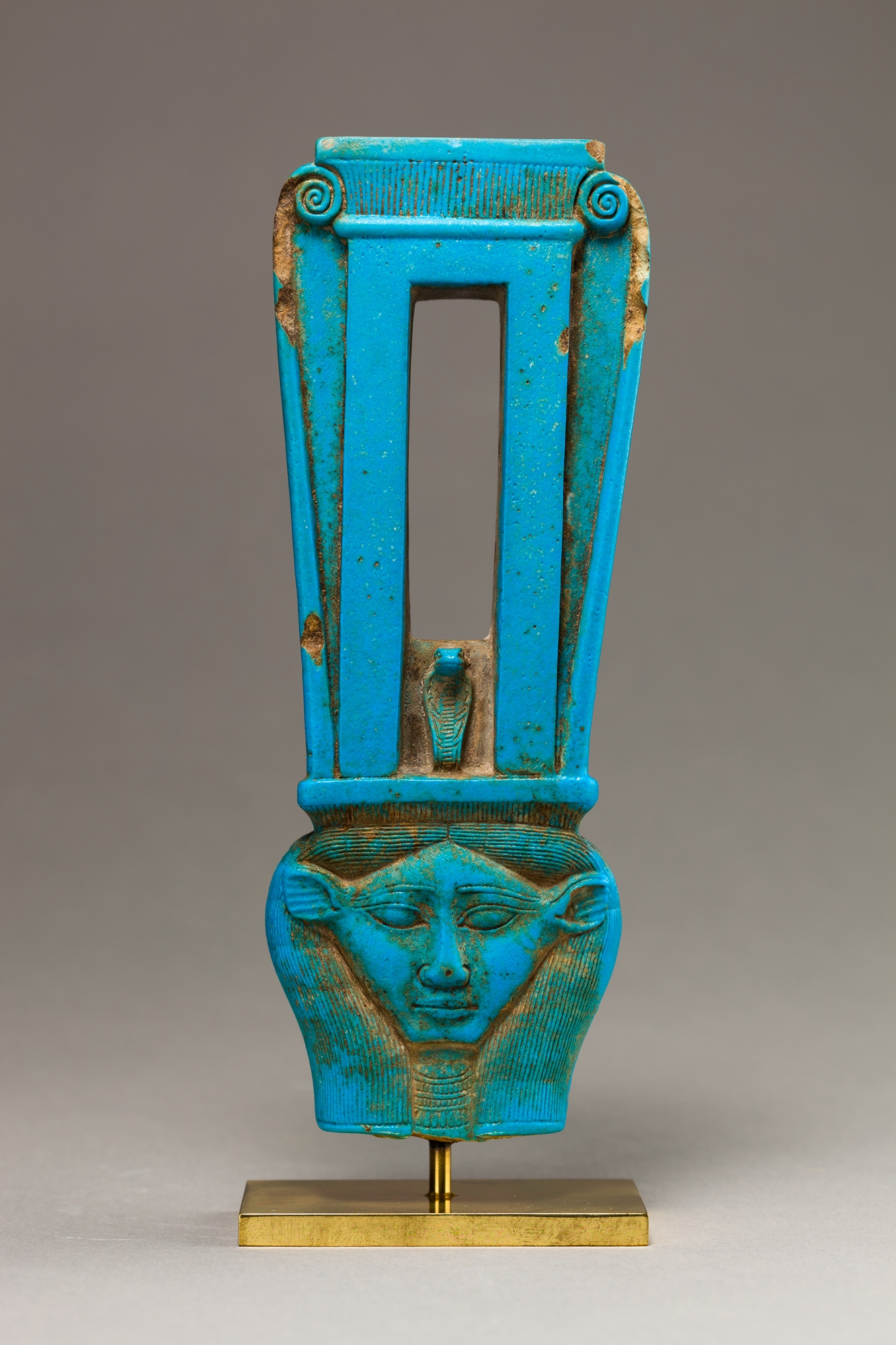Upper part of a naos sistrum
Third Intermediate Period–Late Period
This upper part of a naos sistrum preserves the head and volutes derived from the Bat fetish and the naos frame with uraeus at the lower end. The Hathor emblem wears the straight wig that seems most common in the Late Period, rather than the curled wig seen on some sistra.
The goddess’s face is always broad at the cheeks and flattened at the chin, but the quadrangular form here is emphasized by the lines of the hair drawn down across her forehead and behind her ears and by the emphatically squared chin. The angularity and the bright blue color make it possible this example dates somewhat earlier than some of the others exhibited here; the angularity is certainly seen, for example, in images of the god Bes from the Third Intermediate Period.
Three holes on either side are provided for wires to hold rattle disks. Although faience is a relatively breakable material compared to wood or metal, there is no reason that faience sistra would not be suitable for single use or festival use, and traces of wear around the holes might suggest the wires were actually inserted in this example and the instrument used.
Due to rights restrictions, this image cannot be enlarged, viewed at full screen, or downloaded.
This artwork is meant to be viewed from right to left. Scroll left to view more.






